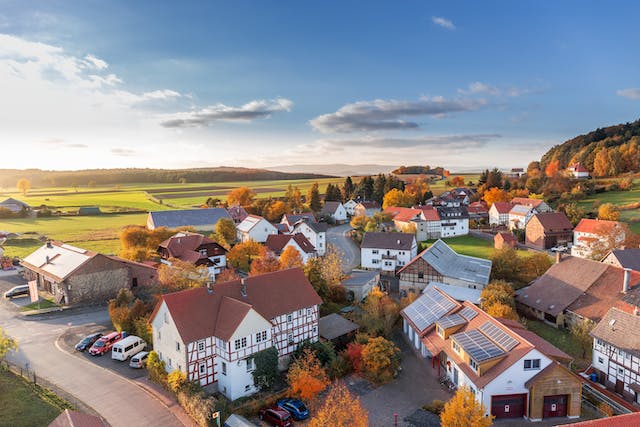Green Suburbia: 4 Ways to Create Sustainable Neighborhoods of the Future
By: Evelyn Long
The human population continues growing, so they need homes and communities. Designing a neighbourhood can be incredibly profitable, but how a builder plans it can significantly impact the planet. Thanks to more awareness, the future could see more sustainable towns that can combat the impacts of climate change.
The Importance of Sustainable Neighborhoods
Residential areas are responsible for one-fifth of the United States’ annual greenhouse gas emissions. While it’s easy to focus on the changes industries can make to improve the environment, neighbourhoods can significantly improve or worsen climate change.
The rate of global warming increased more than 10 times since human-created emissions began entering the atmosphere. It’s contributed to the destruction of habitats, endangerment of species and various human health crises. Without working towards reducing and eliminating carbon emissions, the planet could reach a tipping point within the next decade. These four tips can help builders slice emissions.
1. Utilize Solar Energy
The sun provides one of the cleanest forms of energy. There are many benefits to having photovoltaic solar panels on a house, including raising home values in a community. One family can save nearly $30,000 in power costs over 20 years. A solar neighbourhood can power the surrounding area, ensuring sufficient clean energy for all members without requiring homeowners to manage their systems.
There are many benefits to solar energy. It’s a renewable energy source that’s carbon neutral and readily available. Active solar energy uses panels to transform the sun’s energy into electricity. There is also passive solar, which relies on home design.
If someone plans a neighbourhood from scratch, they can build homes to take full advantage of passive solar. It collects thermal mass through south-facing windows and stores it for energy use. Thanks to the windows’ abundant natural light and insulation, this method can also reduce emissions from heating or cooling.
2. Create Biking/Walking Paths
Walking or biking to nearby locations isn’t just a great way to get exercise. It can also help reduce the impacts of climate change. Research shows people can lower their carbon footprint by a quarter using active transport.
While bikes can be on the street, there are reasons cyclists have concerns about riding on the road. Aside from the risks of getting struck from behind or breathing in too much exhaust, their presence can annoy local drivers, potentially creating road rage.
Adding bike paths to local roadways could increase the number of people who choose to bike, walk or take public transportation. When a builder creates a neighbourhood with well-maintained trails, individuals and families are likelier to enjoy time on them. Walking and running paths are also advantageous. Having a regularly available resource raises the likelihood of people using it.
3. Use Native Landscaping
Native landscaping involves using plants that naturally thrive in the local environment. They involve significantly less care than non-native grasses, trees and flowers. Since the flora adapted to the local soil, it needs less fertilizer.
If it’s a native species, designers can often find them at nearby nurseries or garden centers, reducing the miles travelled to get to a sustainable neighbourhood. Local plants also reduce the need for frequent irrigation since they’re better at surviving in the environment, reducing the need for pesticides.
Plants absorb millions of tons of carbon emissions annually. Landscaping locally helps absorb more carbon while minimizing the emissions released.
Native landscaping also aids local wildlife. The plants provide resources for pollinators and small animals. Birds, squirrels, rabbits and other vulnerable creatures can seek refuge in the neighbourhood, creating a thriving ecosystem.
4. Establish Community Gardens
Builders can improve a neighborhood’s sustainability through local produce. A community garden allows residents to indulge in fresh fruits, vegetables and herbs. Not only are locally-grown items more nutritious, but they can taste better.
Grocery store produce can travel hundreds or even thousands of miles before it arrives on a nearby shelf. Growing it nearby lets residents enjoy the food in its prime and can cut the community’s contribution to vehicle emissions.
Adding gardens to neighbourhoods can also improve residents’ physical and mental health. Working together can help neighbors bond and being around plants can reduce stress levels. Walkways, benches and playground equipment can create a mini suburban paradise.
Creating Sustainable Neighborhoods for the Future
Sustainable neighbourhoods decrease carbon emissions to create a healthier world and improve the lives of residents. By making green changes, builders can impact the planet’s future.
Author:
Evelyn Long is a writer and editor focused on construction and sustainability. Her work can be
found on Renovated, a web resource for better building and design.




